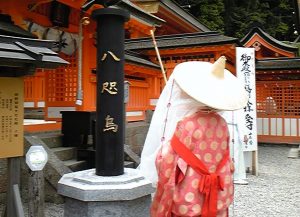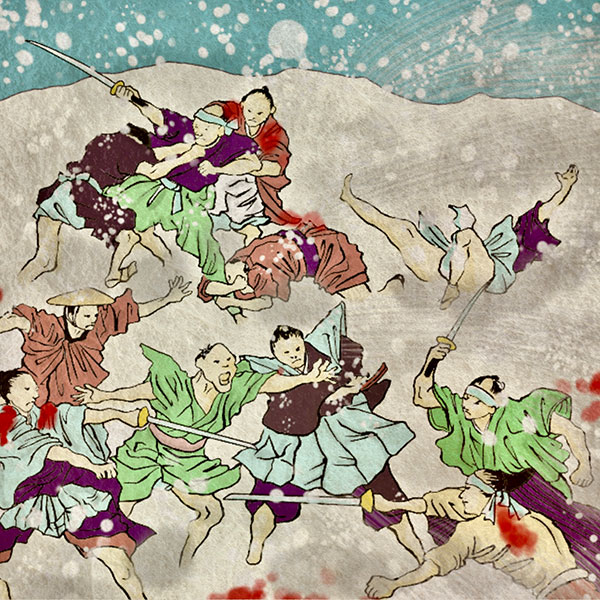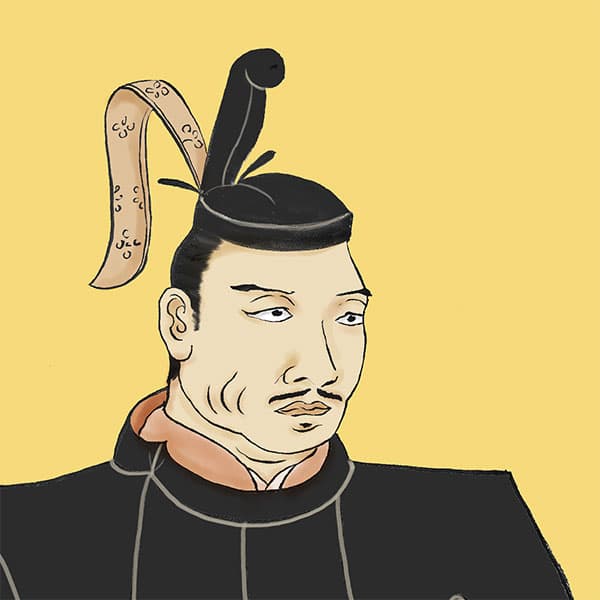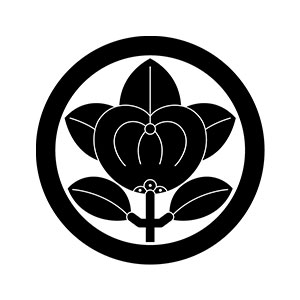- Hikone DomainRuled by the Ii family, the head of the Fudai daimyos.
- The Hikone domain was ruled by the Ii family, whose ancestor was Ii Naomasa, one of the Four Heavenly Kings of Tokugawa. Although the shogunate periodically moved feudal lords to different countries, the Ii clan continued to rule the Hikone domain. Here, we will introduce the history of Hikone Domain.

Hikone CastleHikone City, Shiga Prefecture
- TOP
- Kansai
- Shiga Prefecture
- Hikone Castle
| Tenshu | Existing castle tower|National Treasure Gojo |
|---|---|
| Other name | Kinki Castle |
| castle construction | 1603 |
| address | 1-16 Kanakicho, Hikone City, Shiga Prefecture |
| telephone number | 0749-22-2742 |
| Opening hours | 8:30-17:00 (last entry to the castle tower until 16:45) |
| closing day | Open all year round |
| Admission fee | Adults 800 yen / Elementary and junior high school students 200 yen |
- Access to Hikone Castle
- About 15 minutes walk from JR Hikone Station.
HISTORYThe castle tower is a national treasure. Hikone Castle was built as the residence of the Ii family.
Hikone Castle is one of the five castles whose castle tower is designated as a national treasure. It was built in the early Edo period and was the residence of the Ii family, famous as the birthplace of Naosuke Ii, who ruled the great prison of the Ansei era. In this article, let's first take a look at the history of Hikone Castle.
- Mitsunari Ishii's residence, a castle built using building materials from Sawayama Castle
- Hikone Castle is a castle built on Mt. Hikone in what is now Kanaki-cho, Hikone City, Shiga Prefecture in the early Edo period. It was built as a flat mountain castle built on a low mountain. Hikone was originally the place where Ishida Mitsunari built and ruled Sawayama Castle. After the Battle of Sekigahara occurred in 1600 and Ishida Mitsunari was executed, this land was given to Ii Naomasa, one of the Four Heavenly Kings of Tokugawa.
Tokugawa Ieyasu considered this area to be a base for Chinzei, where he would monitor the feudal lords in the Kansai region and use it as a base for battle in case of an emergency. That's why I gave it to my most trusted subordinate. Ii Naomasa initially entered many castles, but he disliked the medieval construction of Sawayama Castle and the fact that it was the residence of Ishida Mitsunari, so he proposed building a new castle. However, Ii Naomasa died in 1602 from injuries sustained in the Battle of Sekigahara. Since his eldest son, Naotsugu Ii, who succeeded him, was still young, the chief retainer, Morikatsu Kimata, approached Tokugawa Ieyasu in 1603 to begin construction of a castle on Mt. Hikone facing Lake Biwa. At this time, wood from Otsu Castle and Sawayama Castle was used as building materials. Three Kogi Magistrates were appointed to build Hikone Castle, and 12 feudal lords from seven countries, including the Owari and Echizen domains, were ordered by the Shogunate to help. This suggests that the construction of Hikone Castle was a national project. The castle tower was completed in 1606, and Ii Naotsugu, son of Ii Naomasa, entered Hikone Castle as the first head of the castle. Afterwards, construction of the palace began in 1616, after the Summer War in Osaka, and all buildings were completed in 1622.
Furthermore, Hikone Castle was built as a base to control the feudal lords of the Western region, so among castles built in the early Edo period, it is equipped with military facilities such as a castle tower and a turret. Tokugawa Ieyasu planned to use Sawayama Castle as a base for the shogunate to fight against if the feudal lords of the western regions rebelled. However, no major battles occurred after the Osaka Summer Campaign, and the castle tower and turret of Hikone Castle were used as warehouses to store annual rice tax.
After that, Hikone Castle served as the residence of the Ii family and the political center of the Hikone clan until the Meiji period. Naosuke Ii, a feudal lord at the end of the Tokugawa shogunate whose name is known for the Ansei Great Prison and the Sakuradamongai Incident, lived in Hikone until he became the lord of the domain at the age of 35. - Hikone Castle after the Meiji era
- When feudal domains were abolished and prefectures established in the Meiji era, castles all over the country were destroyed one after another. Hikone Castle was also originally planned to be demolished and the castle kept abandoned, but since it became a facility under the jurisdiction of the Ministry of War, the castle tower and turret were not demolished. However, due to its age, Hikone Castle was sold to the private sector and demolished, but when Emperor Meiji visited Hikone in 1817, Shigenobu Okuma, who accompanied him, built the castle tower and turret. I announced the save. As a result, the castle tower and turret of Hikone Castle were preserved, and were eventually granted to Naonori Ii, the last lord of the Hikone domain, after passing through the Hikone Imperial Palace, an area attached to the Imperial Family. Later, in 1944, Hikone Castle was donated by the Ii family to Hikone City, and in 1951, it was designated as a national historic site as the "Hikone Castle Ruins." The following year, two buildings, the castle tower (one building) and the attached turret and Tamon turret (one building), were designated as national treasures.
- Current Hikone Castle
- Hikone Castle, designated as a national treasure, underwent major repairs in the Showa era from 1957 to 1968, and major repairs in the Heisei era from 1993 to 1996. After that, it became what it is today. In addition, the palace was rebuilt in 1987 and is now operated as a museum. In 2006, it was selected as one of Japan's top 100 castles, increasing its popularity. The following year, in 2007, the 400th anniversary of the construction of Hikone Castle, a national treasure, was held, and the mascot character "Hikonyan" made an appearance. Hikonyan sparked the mascot character boom, and its popularity remains strong even today. Costumes appear at Hikone Castle on Saturdays and Sundays, and are popular with tourists. The current Hikone Castle is open to the public, including the national treasure castle tower, the important cultural property Taiko Gate, various turrets, stables, and Genkyuen Garden, a scenic spot. There are also many trees and flowers planted, such as plum groves and Yoshino cherry trees, so you can enjoy seasonal flowers.
Read about incidents related to Hikone Castle
- Incident outside the Sakuradamon gateNaosuke Ii assassination case
- On March 3, 1860, the world was shocked. The elder Ii Naosuke was assassinated outside the Sakuradamon gate of Edo Castle (present-day Kasumigaseki, Chiyoda-ku, Tokyo) by roni samurai from the Mito domain. Due to an incident called the ``Sakuradamongai Incident'',

Read biographies related to Hikone Castle
- Naomasa IiIi's Red Demon
- The period of war, which was called the Sengoku period after the history of China, was brought to an end by Tokugawa Ieyasu. Among the vassals who helped Tokugawa Ieyasu unify the country, four particularly powerful ones are called the Tokugawa Four. One of these four heavenly kings, the foundation of the Hikone clan

History of the Hikone Domain, with Hikone Castle as the domain office
| Domain office | Hikone Castle |
|---|---|
| old area | Inukami District, Omi Province |
| stone height | 300,000 koku |
| Fudai/Tozama | Fudai |
| main lord | Mr. Ii |
| Estimated population | 200,000 people (first year of the Meiji era) |
Ii Naomasa, an intelligent general known as the Four Heavenly Kings of Tokugawa, entered Higashi-Omi, which was the territory of Ishida Mitsunari. Since then, it has produced five great elders. The 13th feudal lord, Naosuke Ii, signed the Japan-US Commerce Treaty and carried out the Ansei Great Prison, and was killed in the Sakuradamon Incident.
Hikone Castle, a national treasure overlooking Lake Biwa and associated with the Ii clan
Hikone Castle, a national treasure associated with the Ii clan near Lake Biwa, is famous for its mascot character "Hikonyan" and as a location for many TV dramas. There are 12 castle towers remaining, and as a castle built during the Edo period that symbolizes the peaceful era, it is aiming to be registered as a World Heritage Site. Here we will explain the charms and highlights of Hikone Castle.

- Hikone Castle and its history
- Hikone Castle in Hikone City, Shiga Prefecture, was built by the Ii clan under the Edo Shogunate over a period of about 20 years, starting in 1604. Originally, Sawayama Castle, the residence of Ishida Mitsunari, was located in Hikone, but after the Battle of Sekigahara, Ii Naomasa took Mitsunari's place. Later, at the order of Tokugawa Ieyasu, Hikone Castle was built as a replacement for Sawayama Castle to keep an eye on the western daimyo of Toyotomi Hideyoshi's side.
Hikone Castle was built using recycled wood and stone from Sawayama Castle, Otsu Castle, Nagahama Castle, etc. It was a so-called "recycled castle." For example, the castle tower was moved from Otsu Castle, and it was completed in about two years.
Ii Naomasa died halfway through the construction of Hikone Castle, and was succeeded by his son Ii Naotsugu and his younger brother Ii Naotaka. As Naotsugu was in poor health, Naotaka fought in his place during the Winter and Summer Sieges of Osaka, and played an active role. Due to these achievements, Naotaka was chosen to succeed him as head of the Ii family. After that, Naotaka's fief was increased due to his contributions in participating in the shogunate government, and the Hikone domain eventually grew from 180,000 koku to 350,000 koku. The Ii family served as the domain's lord until the Meiji era, when the domain was in danger of being dismantled due to the Meiji era's order to abolish castles.
However, when Emperor Meiji stopped by on a visit, he ordered that the castle be preserved. There seems to have been some lobbying behind the scenes, but this single word from the emperor meant that Hikone Castle has been protected to this day. Furthermore, Hikone Castle is a rare castle in Japan in that its double moats, the central moat and the moat, remain almost completely intact. - Highlights of Hikone Castle: The National Treasure Keep
- The castle tower is three stories high and features a gorgeous design that combines different roof designs, including a gabled gable, a hipped roof, and a rounded karahafu. The second and third floors feature formal flower-shaped windows, and the top third floor has decorative verandas, giving the building a sense of style and design.
The view from the windows of the castle tower is simply spectacular! You can see Lake Biwa across the town of Hikone, as well as the ruins of Ishida Mitsunari's Sawayama Castle.
Since this was a wartime castle tower, with the war against Hideyoshi in mind, there are gun slits inside and hidden slits that are hidden by walls on the outside. The inside of the gables is also used as a storeroom, and there is also a gun slit. You can take a peek inside the gables, so be sure to check it out. 


- Highlights of Hikone Castle 2. Climbing stone walls
- Hikone Castle has five "climbing stone walls." These 1m to 2m high stone walls are built to climb the mountain slope, and are meant to block the movement of enemy soldiers moving up the slope. They are often seen in "wajo" castles built on the southern coast of the Korean Peninsula by Toyotomi Hideyoshi during the Bunroku-Keicho Invasion, when he attacked Korea, and can only be seen in Matsuyama Castle and Takeda Castle in Japan. If you love stone walls, this is a must-see.



- Highlights of Hikone Castle 3: The Tenbin Tower, relocated from Nagahama Castle
- The Tenbin Tower, an Important Cultural Property, is said to have been relocated from Nagahama Castle's Otemon Gate and is located up the slope from the Omote Gate and Otemon Gate. The central corridor bridge serves as a drop bridge in an emergency to prevent enemy soldiers from invading. When viewed from above, it is U-shaped, and the towers look like balance, hence the name. A notable feature is that each tower faces in a different direction, and one theory is that the east faces the Edo Shogunate, and the west faces either Kyoto or Hideyoshi's Osaka Castle.
Additionally, the stone walls of the building's foundations are stacked differently on the left and right sides. The right side is stacked in the Uchikomihagi style that was used when the castle was built by stonemasons from Echizen, while the left side is stacked in the Otoshizumi style, which was rebuilt at the end of the Edo period. 


- Highlights of Hikone Castle #4: The Horse Stables, an Important Cultural Property
- Hikone Castle has a thatched-roof horse stable within the castle. The L-shaped building can accommodate 21 horses belonging to the feudal lord and others. There are no other horse stables remaining within the castle, and they can only be seen here, so they have been designated an Important Cultural Property.
- Highlights of Hikone Castle ⑤I really want to meet Hikonyan!
- Hikone City's mascot "Hikonyan" made Hikone Castle famous. The character is a combination of a maneki-neko (beckoning cat), which is said to have saved Hikone feudal lord Ii Naotaka from a thunderstorm by waving his hand in front of the temple gate, and a red helmet, the symbol of the Ii army.
Hikonyan greets tourists around Hikone Castle every day. He appears in front of the castle tower and at the Kanbukimon Gate of the Hikone Castle Museum, which is a replica of the main palace, so be sure to meet him and take a photo! The boarding times for each day are announced on the Hikonyan page of Hikone City. 


- Recommended photo spots for Hikone Castle
- We recommend taking photos of the castle tower from Nishinomaru or the remains of the Tsukimi Yagura tower. Photos from the strolling garden "Genkyuen" are also beautiful, reminiscent of postcards, with the castle seen through a beautiful garden modeled after the Eight Views of Omi. We especially recommend taking photos during the autumn foliage season. In addition, during cherry blossom season, try taking photos of the cherry blossoms reflected in the moat from near Hikone Castle Resort & Spa.




- WriterNaoko Kurimoto(Writer)I am a former travel industry magazine reporter. I have loved history, both Japanese and world history, since I was a child. I usually enjoy visiting temples and shrines, especially shrines, and often do ``pilgrimages to sacred places'' themed around historical figures. My favorite military commander is Ishida Mitsunari, my favorite castle is Kumamoto Castle, and my favorite castle ruins is Hagi Castle. My heart flutters when I see the ruins of battle castles and the stone walls of castle ruins.








































